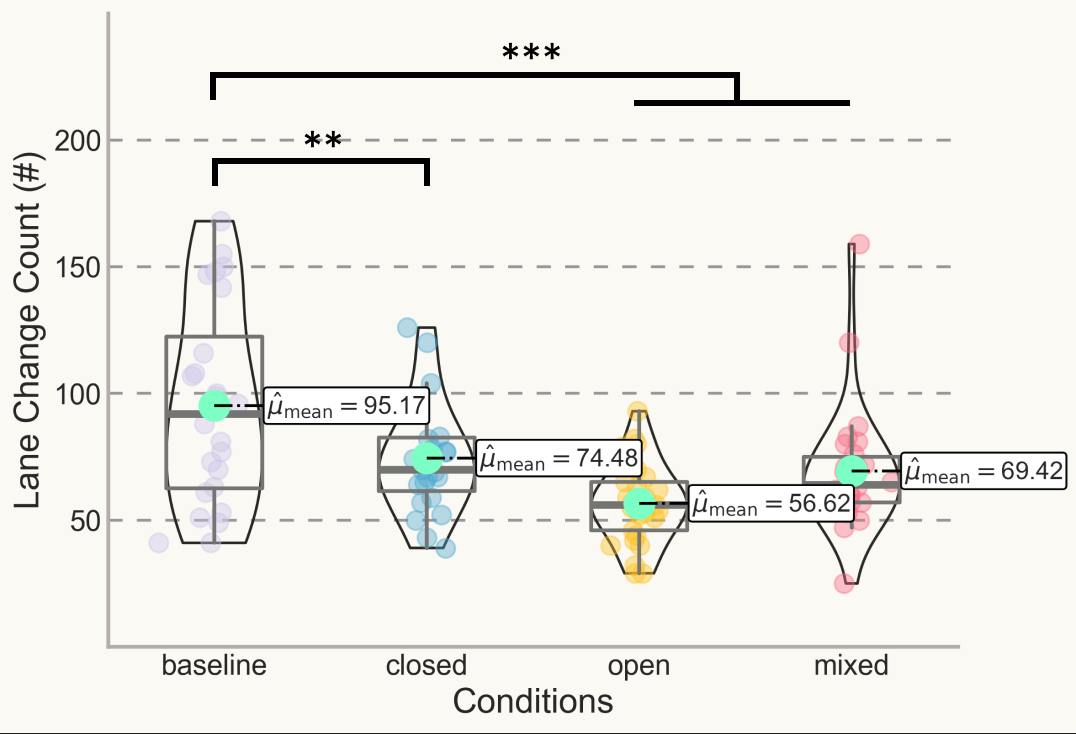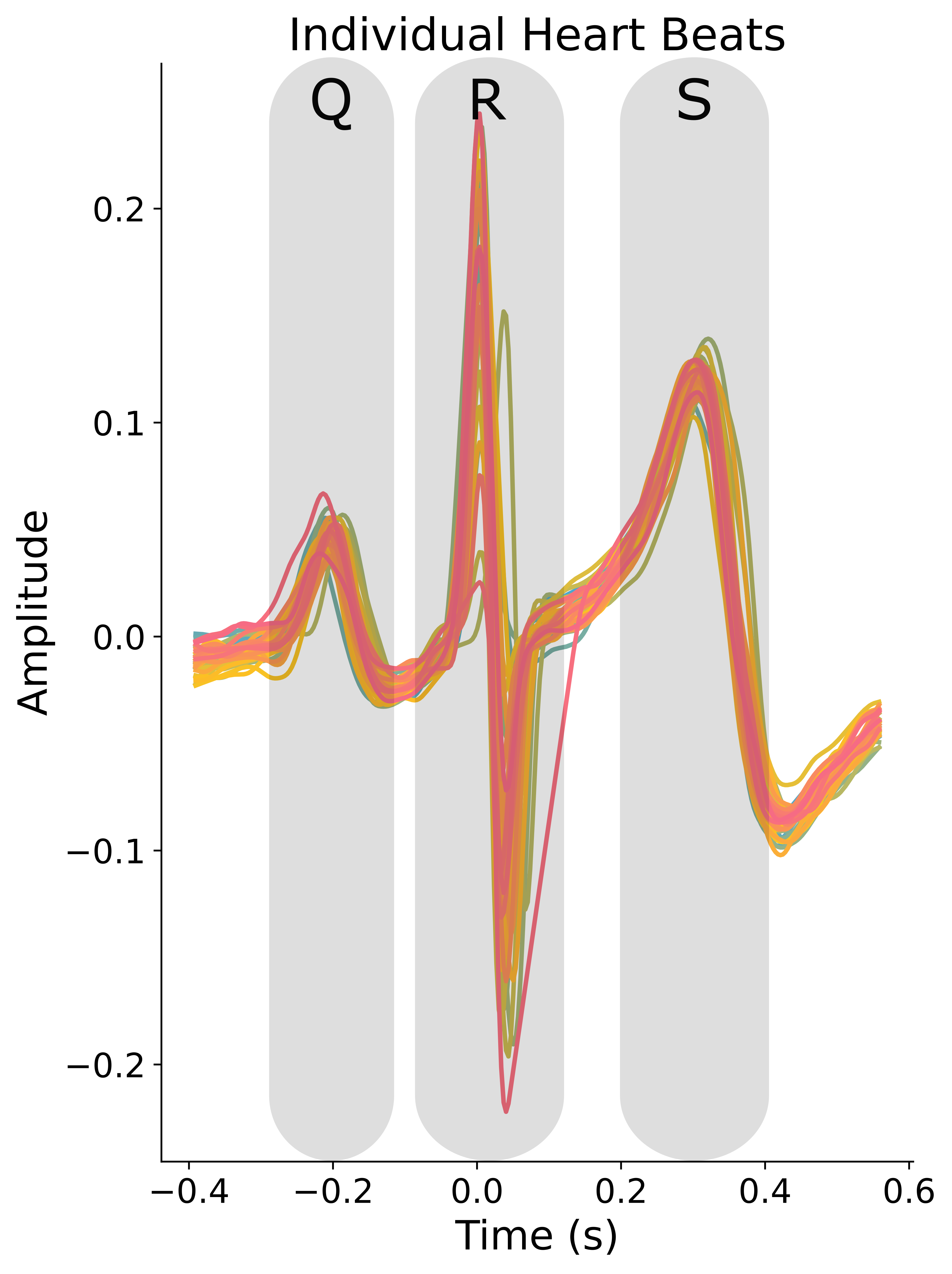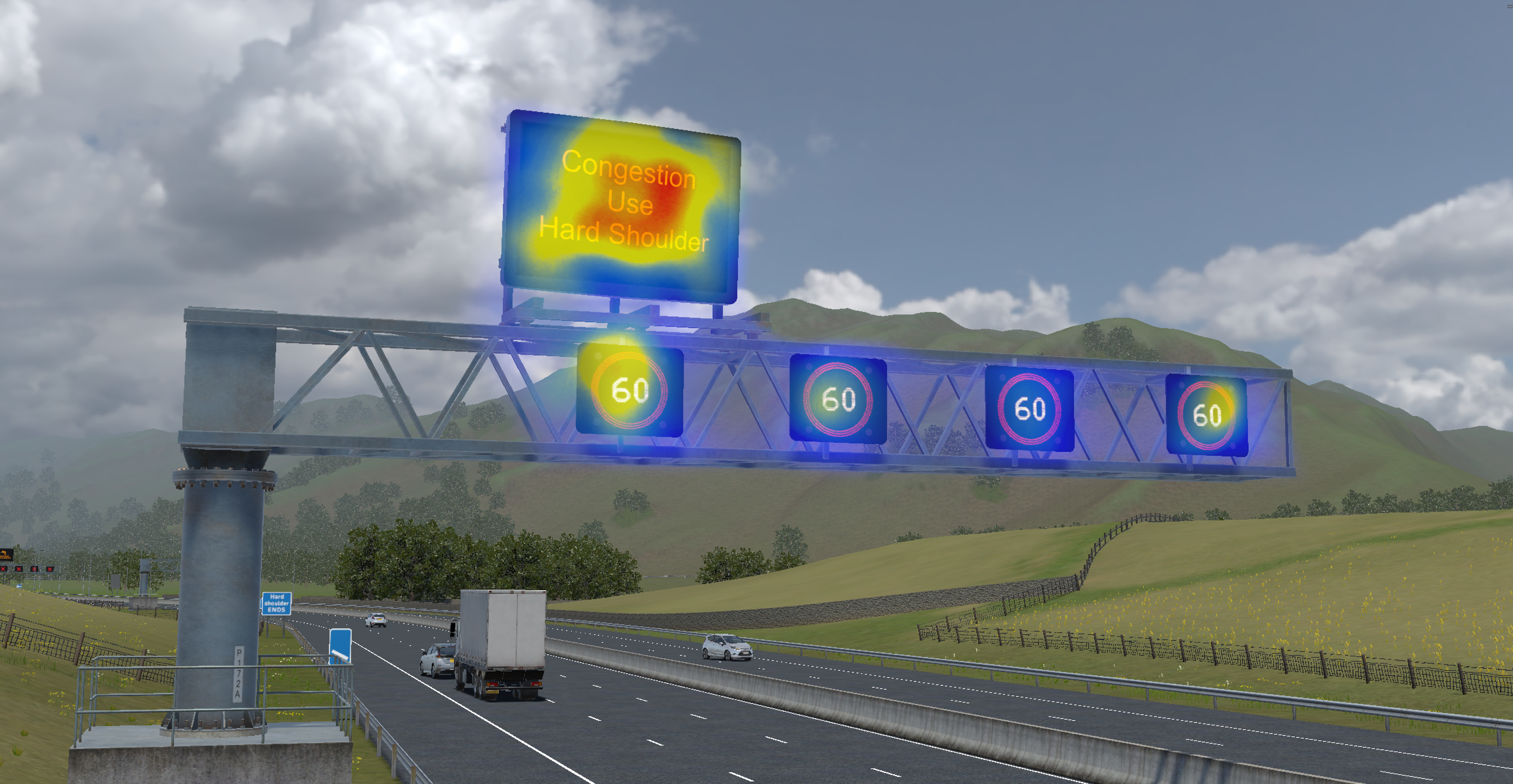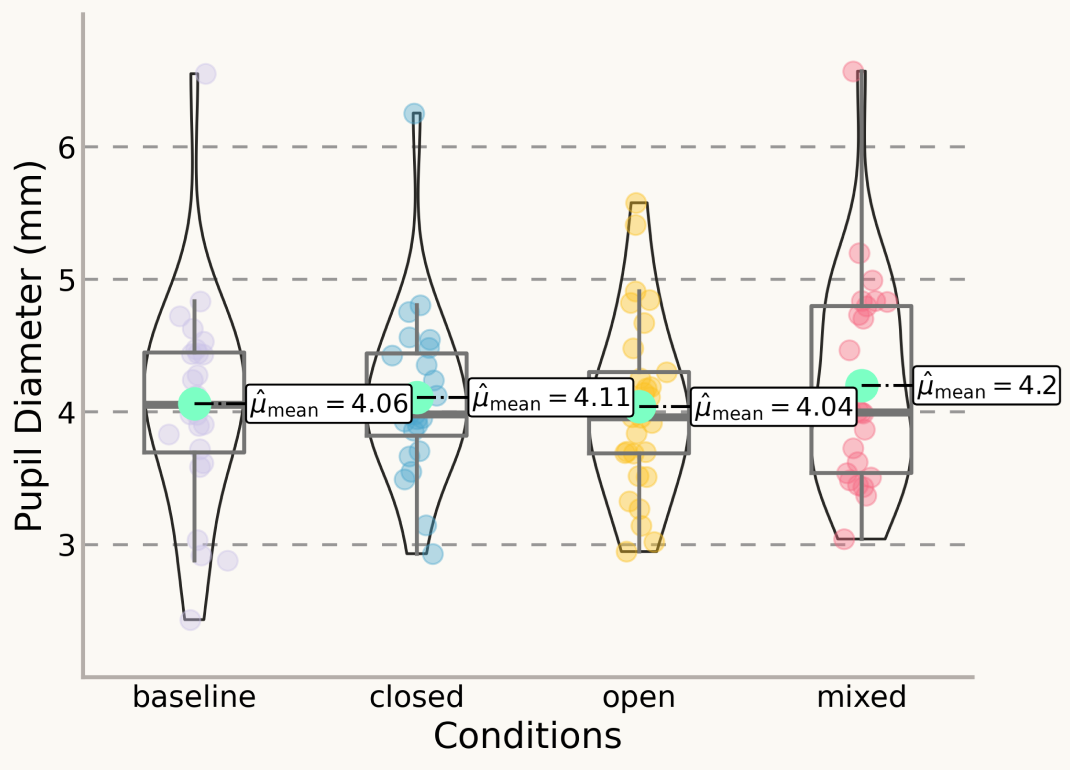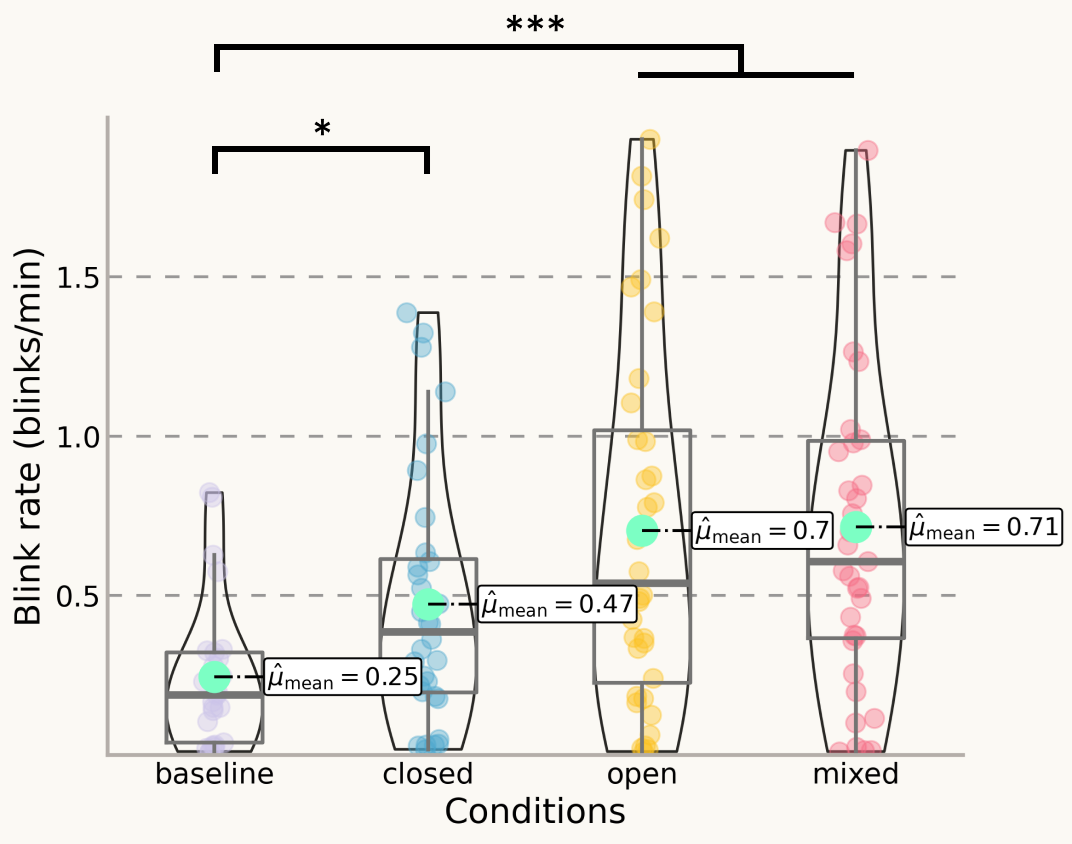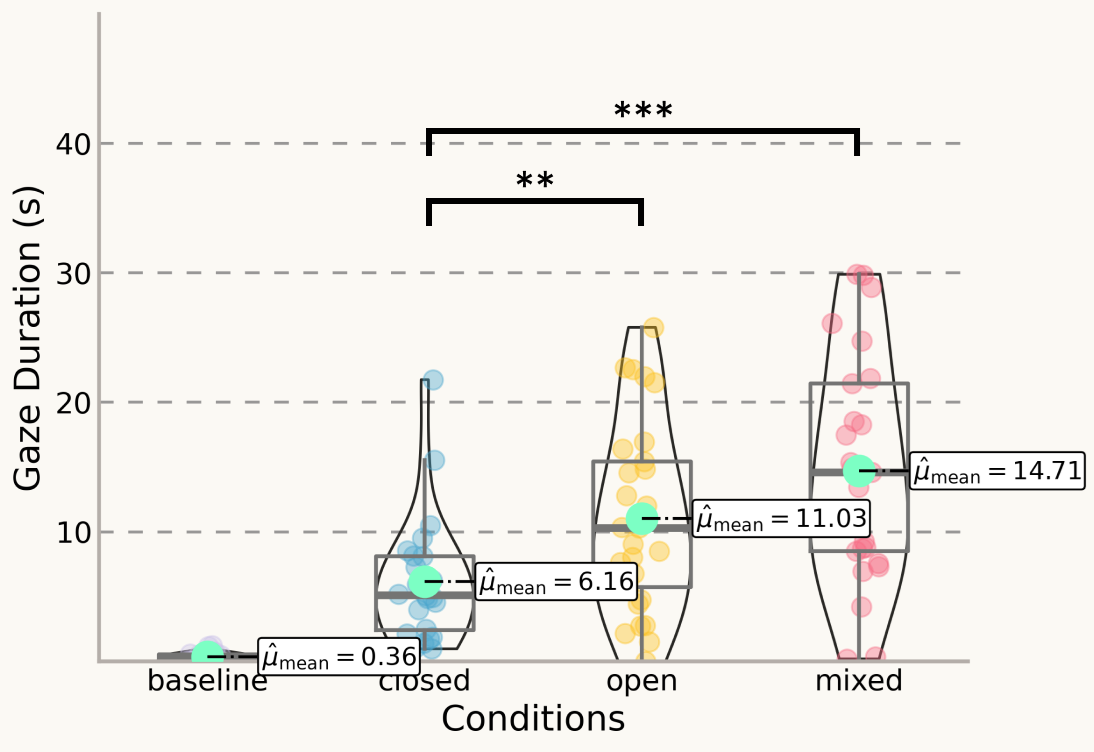Insight into Driver Behaviour and Cognitive State on SMART Motorways
Understanding how drivers interact with and comprehend various road conditions is crucial for enhancing road safety, efficiency, and informing policy. In collaboration with WSP, we conducted a study for Highways England to investigate driver responses and cognitive load when navigating dynamic hard shoulder motorways. This initiative responded to the Transport Select Committee's recommendation to pause DHS conversions and aimed to identify factors affecting driver comprehension and provide insights for future improvements.
Scenarios
The simulation was based on an existing section of the M6 motorway between junctions 4 and 8, configured into a loop. It features overhead gantries, advanced motorway indicator signals with supporting variable message signs, speed cameras and emergency areas.
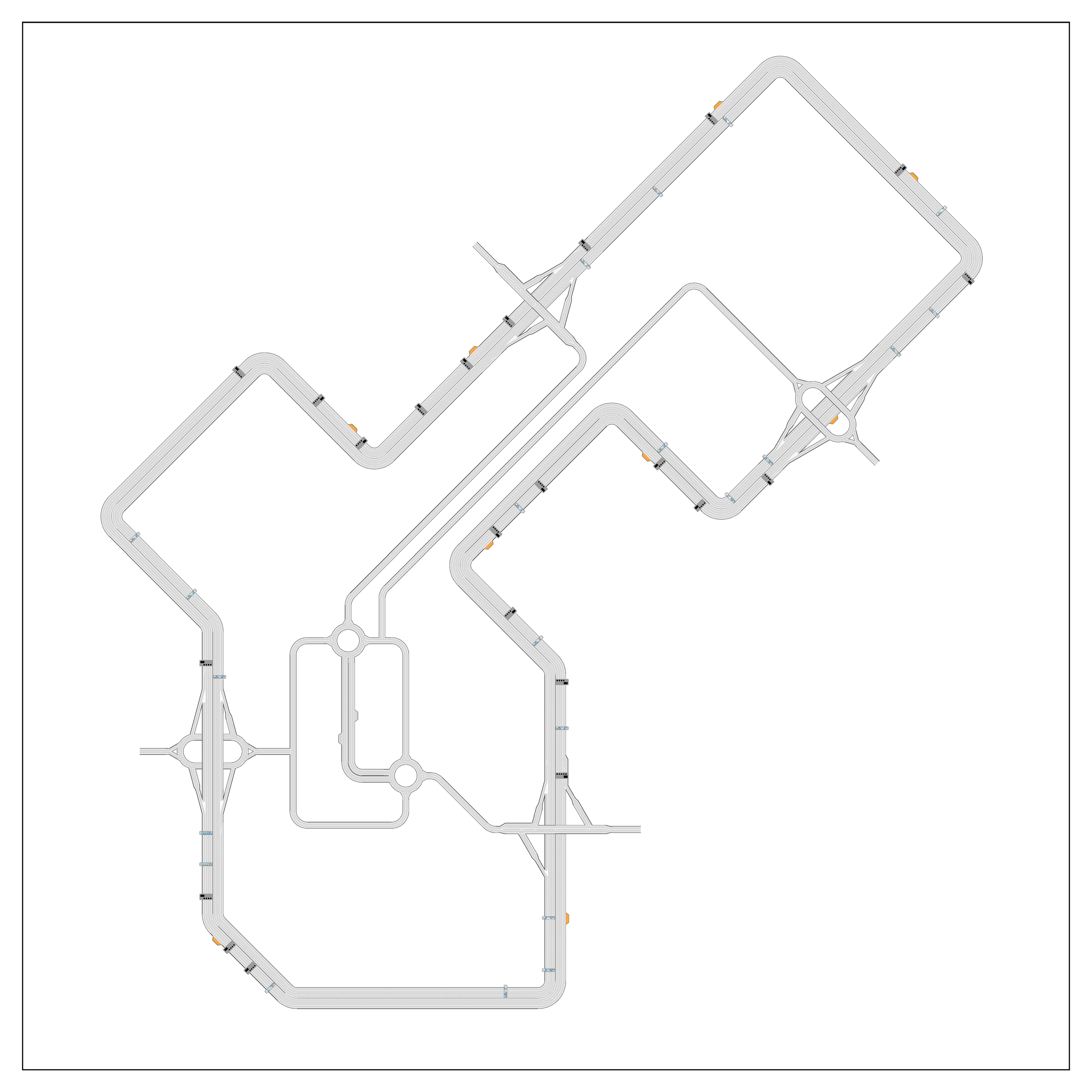
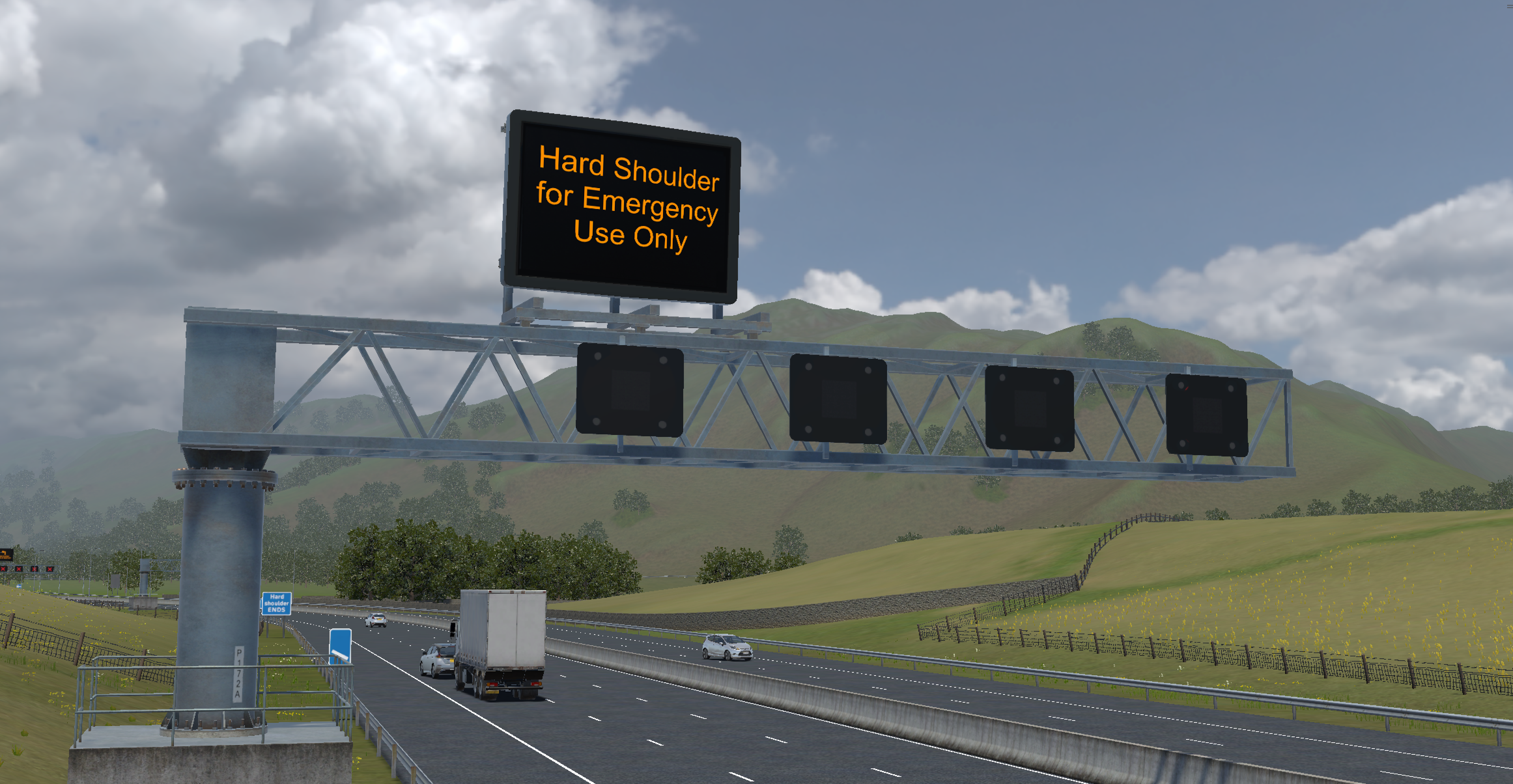
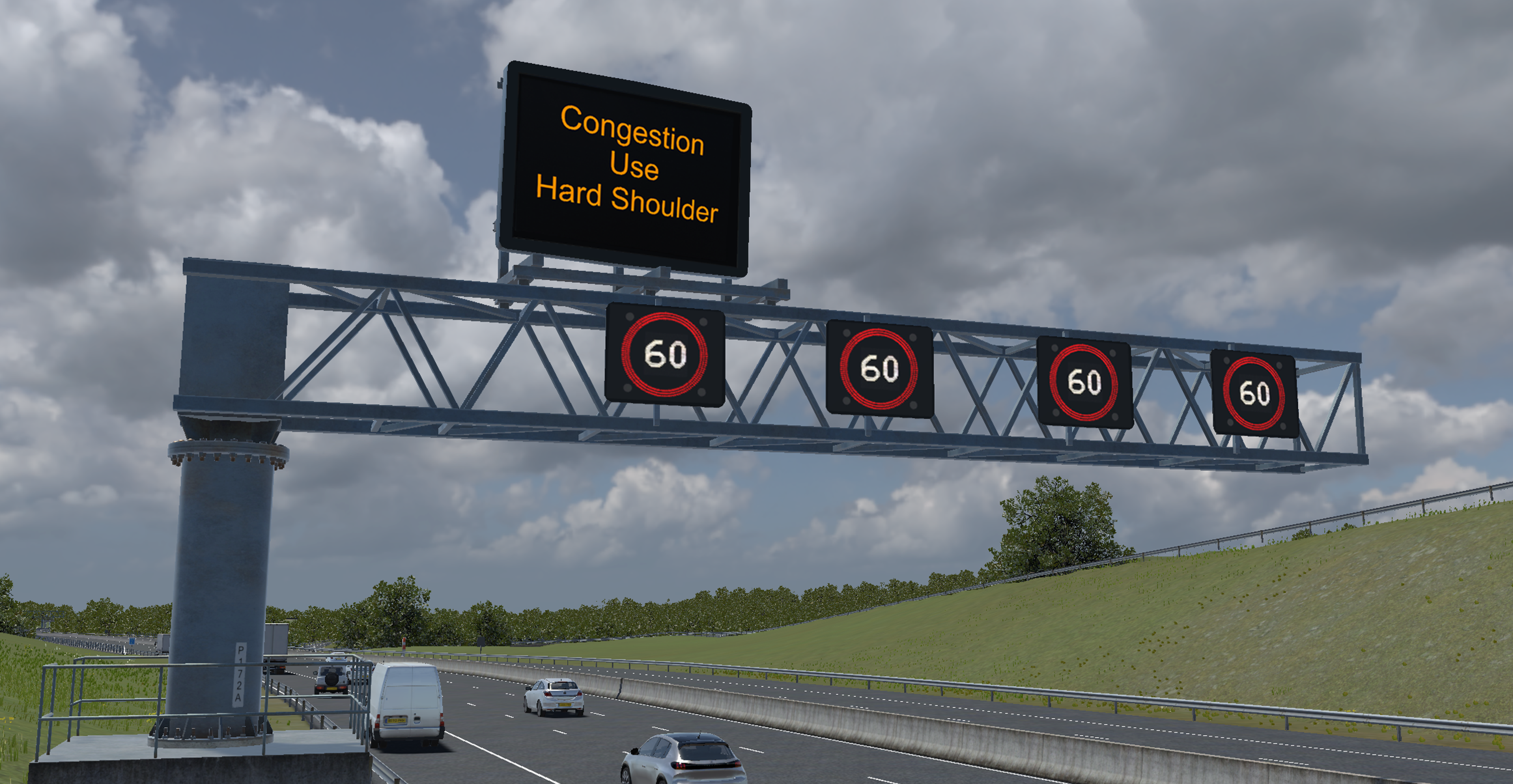
Participants, representing a diverse cross-section of the driving population in terms of age and experience (n = 39), were exposed to three scenarios in a within-subject design:
- Scenario "Closed": hard shoulder closed to traffic
- Scenario "Open": hard shoulder open to traffic
- Scenario "Mixed": dynamic use of the hard shoulder, varying between open and closed along the same motorway
A baseline measure was acquired in standard dual three-lane motorway.
The traffic in the simulation scenarios was designed to reflect free-flow conditions, determined by algorithms to ensure realistic vehicle movement and flow.
The hypothesis was that the mixed DHS scenario would induce higher cognitive load and stress levels in drivers compared to the closed and open scenarios, due to the dynamic and variable use of the hard shoulder.
MXT Analytics Package
To fully leverage our mixed reality simulator, we integrated both behavioral and psychophysiological measures. While behavioral metrics provide direct insights into driving performance, psychophysiological measures like electrocardiogram and eye tracking detect subtle changes in cognitive state—such as stress and cognitive load—that behavior alone can't reveal. This comprehensive approach offers a deeper understanding of driver reactions under different scenarios.


